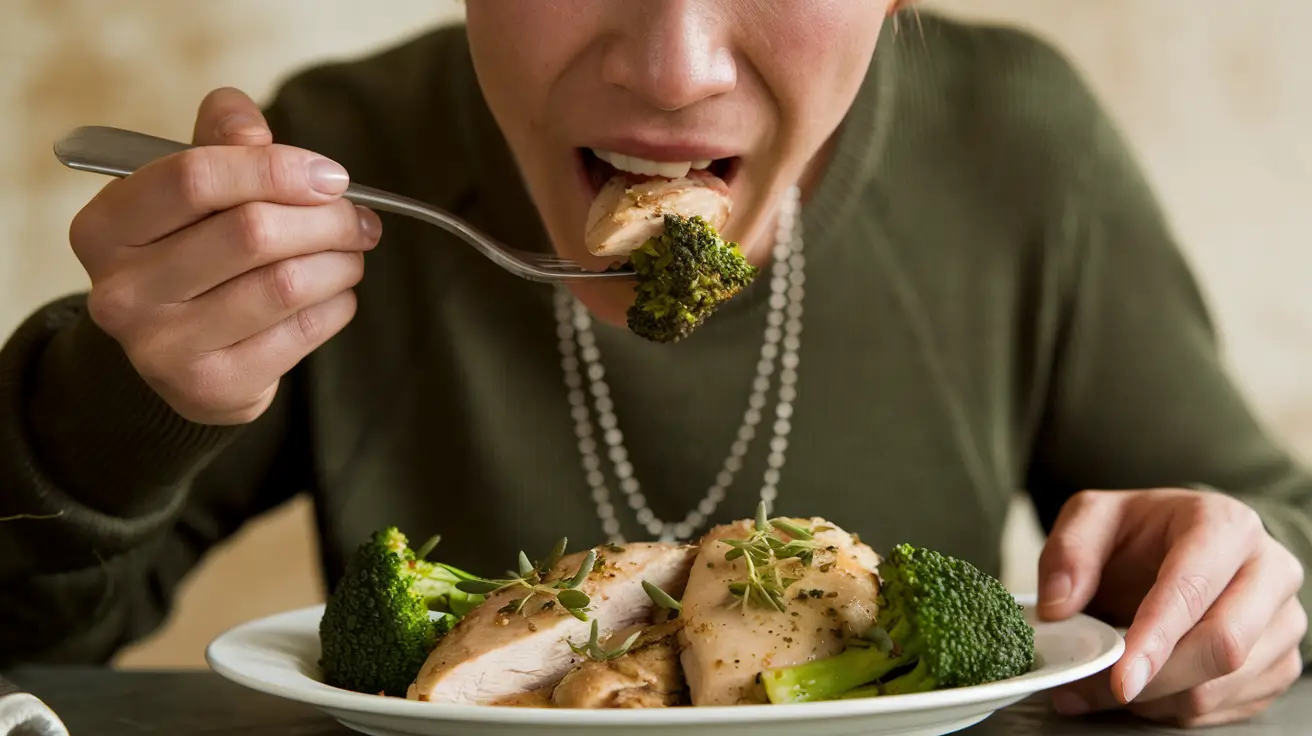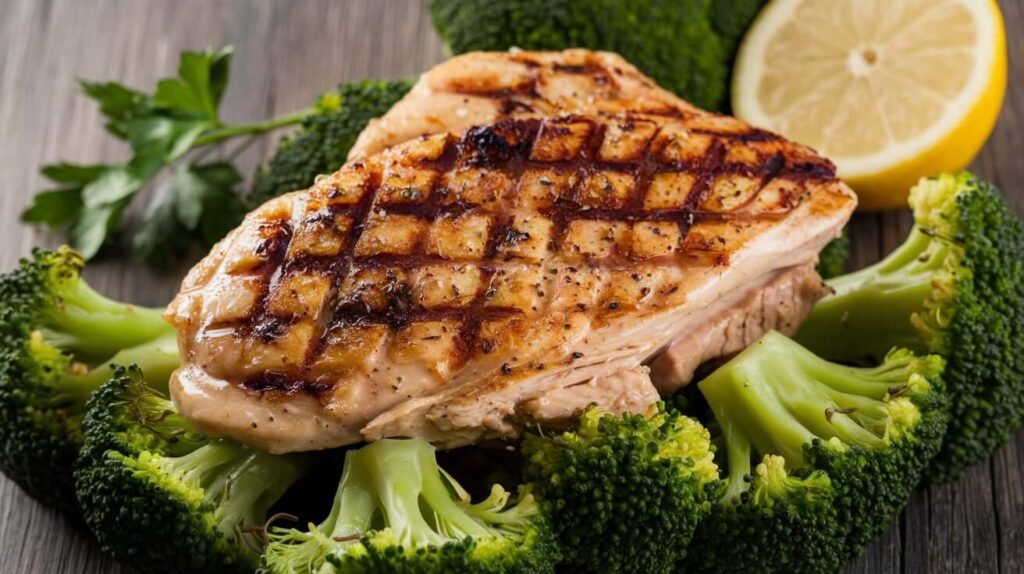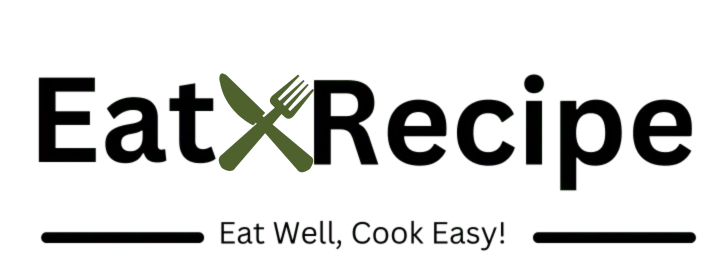The Chicken and Broccoli Diet: A Comprehensive Guide to This Popular Eating Plan

Table of Contents
- Introduction
- What is the Chicken and Broccoli Diet?
- Nutritional Profile of Chicken and Broccoli
- Potential Benefits of the Diet
- Possible Drawbacks and Concerns
- How to Follow the Chicken and Broccoli Diet
- Recipe Ideas and Meal Plans
- Comparison to Other Popular Diets
- Expert Opinions and Scientific Research
- Who Should (and Shouldn’t) Try This Diet
- Tips for Success and Sustainability
- Alternatives and Modifications
- Conclusion
Introduction
In the ever-evolving world of nutrition and fitness, new diet trends emerge constantly, promising rapid weight loss, improved health, and enhanced athletic performance. One such dietary approach that has gained significant attention in recent years is the chicken and broccoli diet. This eating plan, favored by bodybuilders and fitness enthusiasts, has sparked curiosity and debate among nutritionists, health professionals, and the general public alike.
The chicken and broccoli diet, at its core, is a high-protein, low-carbohydrate eating plan that focuses primarily on consuming chicken and broccoli for most meals. While it may seem overly simplistic or extreme to some, proponents argue that this diet offers a straightforward and effective way to achieve specific fitness goals, particularly in the realm of muscle building and fat loss.
In this comprehensive guide, we’ll delve deep into the chicken and broccoli diet, exploring its origins, nutritional profile, potential benefits, and possible drawbacks. We’ll also provide practical advice on how to follow this diet, offer recipe ideas, and compare it to other popular dietary approaches. Whether you’re a fitness enthusiast considering this diet or simply curious about its principles, this article aims to provide you with a thorough understanding of the chicken and broccoli diet and its place in the broader context of nutrition and health.

What is the Chicken and Broccoli Diet?
The chicken and broccoli diet is a restrictive eating plan that, as the name suggests, primarily consists of chicken and broccoli as the main food sources. This diet gained popularity in bodybuilding and fitness circles due to its simplicity and its potential to support muscle growth while promoting fat loss.
Origins and Philosophy
While it’s difficult to pinpoint the exact origins of the chicken and broccoli diet, it has been a staple in bodybuilding communities for decades. The philosophy behind this diet is rooted in the idea of consuming foods that are high in protein and nutrients while being low in calories and carbohydrates. This combination is believed to support muscle maintenance and growth while simultaneously promoting fat loss.
Key Principles
- High Protein Intake: Chicken, being the primary protein source, provides a lean, high-quality protein essential for muscle repair and growth.
- Low Carbohydrate Content: By limiting carbohydrate intake primarily to the fiber found in broccoli, the diet aims to reduce overall calorie intake and potentially enhance fat burning.
- Nutrient Density: Broccoli, a cruciferous vegetable, is packed with vitamins, minerals, and antioxidants, providing essential nutrients while keeping calorie count low.
- Simplicity: The straightforward nature of the diet makes it easy to follow and eliminates the need for complex meal planning.
- Calorie Control: By limiting food choices, the diet naturally restricts calorie intake, which can lead to weight loss.
Variations
While the strictest version of the diet includes only chicken and broccoli, some variations allow for additional lean proteins (such as fish or turkey) and other low-carb vegetables. Some followers of the diet also incorporate small amounts of healthy fats, like olive oil or avocado, to ensure adequate fat intake.
It’s important to note that the chicken and broccoli diet is often viewed as a short-term eating plan, typically followed for a few weeks rather than as a long-term lifestyle. Many use it as a “cutting” diet to reduce body fat quickly, often in preparation for bodybuilding competitions or photo shoots.
In the following sections, we’ll explore the nutritional aspects of this diet in more detail, examining both its potential benefits and drawbacks.
Nutritional Profile of Chicken and Broccoli
Understanding the nutritional composition of chicken and broccoli is crucial to grasping the potential effects of this diet. Let’s break down the nutritional profiles of these two primary components:
Chicken (Skinless Breast, 100g)
- Calories: 165
- Protein: 31g
- Fat: 3.6g
- Carbohydrates: 0g
- Vitamins and Minerals: B vitamins (especially niacin and B6), phosphorus, selenium
Chicken, particularly the breast meat, is an excellent source of lean protein. It’s low in fat and carbohydrates, making it a popular choice for those looking to build muscle while minimizing fat gain. The high protein content supports muscle repair and growth, while also promoting satiety.
Broccoli (Raw, 100g)
- Calories: 31
- Protein: 2.5g
- Fat: 0.4g
- Carbohydrates: 6g (2.6g of which is fiber)
- Vitamins and Minerals: Vitamin C, Vitamin K, Folate, Potassium, Manganese
Broccoli is a nutrient-dense vegetable that provides a range of vitamins, minerals, and antioxidants. It’s low in calories but high in fiber, which aids digestion and promotes feelings of fullness. The high vitamin C content supports immune function, while vitamin K is essential for blood clotting and bone health.
Combined Nutritional Benefits
When consumed together, chicken and broccoli create a meal that is:
- High in Protein: Essential for muscle repair, growth, and maintenance.
- Low in Calories: Potentially supporting weight loss efforts.
- Rich in Fiber: Promoting digestive health and satiety.
- Packed with Vitamins and Minerals: Supporting overall health and bodily functions.
- Low in Carbohydrates: Potentially beneficial for those following low-carb diets or aiming to reduce body fat.
Potential Nutritional Gaps
While chicken and broccoli provide many essential nutrients, relying solely on these two foods can lead to nutritional deficiencies. Some potential gaps include:
- Healthy Fats: Essential for hormone production and nutrient absorption.
- Calcium: Crucial for bone health.
- Vitamin D: Important for calcium absorption and immune function.
- Variety of Antioxidants: Different fruits and vegetables provide a range of beneficial compounds.
- Complex Carbohydrates: Important for energy and certain bodily functions.
It’s these potential nutritional gaps that raise concerns among nutritionists about the long-term sustainability and health impacts of the chicken and broccoli diet. In the next sections, we’ll delve deeper into both the potential benefits and drawbacks of this eating plan.
Potential Benefits of the Diet
The chicken and broccoli diet, despite its restrictive nature, offers several potential benefits that have contributed to its popularity, particularly in fitness and bodybuilding communities. Let’s explore these potential advantages:
1. Weight Loss
One of the primary reasons people turn to the chicken and broccoli diet is its potential for rapid weight loss. This effect is largely due to:
- Calorie Restriction: By limiting food choices, the diet naturally reduces calorie intake.
- High Protein Content: Protein has a high thermic effect, meaning the body burns more calories digesting it compared to fats or carbs.
- Low Carbohydrate Intake: Reducing carbs can lead to quick water weight loss and potentially enhance fat burning.
2. Muscle Preservation and Growth
For those engaged in strength training or bodybuilding, this diet may offer benefits for muscle maintenance and growth:
- High Protein Intake: Protein is essential for muscle repair and growth, especially when paired with resistance training.
- Leucine-Rich: Chicken is high in leucine, an amino acid crucial for stimulating muscle protein synthesis.
3. Improved Body Composition
The combination of potential fat loss and muscle preservation/growth can lead to improved body composition – a higher ratio of lean mass to fat mass.
4. Simplicity and Convenience
The diet’s straightforward nature offers several practical advantages:
- Easy Meal Planning: With limited food choices, meal prep becomes simpler.
- Cost-Effective: Buying ingredients in bulk can be economical.
- Time-Saving: Less time spent on deciding what to eat or preparing complex meals.
5. Blood Sugar Control
The low-carbohydrate nature of the diet may help stabilize blood sugar levels, potentially benefiting those with insulin sensitivity issues.
6. Nutrient Density
Despite its limitations, the diet does provide a concentrated source of several important nutrients:
- High-Quality Protein: Complete protein from chicken supports various bodily functions.
- Fiber: Broccoli provides fiber for digestive health.
- Vitamins and Minerals: Broccoli is rich in vitamins C and K, as well as various antioxidants.
7. Reduced Processed Food Intake
By focusing on whole, single-ingredient foods, the diet naturally eliminates processed foods, which are often high in added sugars, unhealthy fats, and artificial additives.
8. Potential Anti-Inflammatory Effects
Broccoli contains various compounds with anti-inflammatory properties, which may offer health benefits.
9. Short-Term Performance Boost
Some athletes and bodybuilders report increased energy and improved muscle definition when following this diet short-term, particularly when preparing for competitions.
While these potential benefits make the chicken and broccoli diet appealing to some, it’s crucial to consider the diet’s limitations and possible drawbacks, which we’ll explore in the next section. It’s also important to note that many of these benefits can be achieved through less restrictive, more balanced dietary approaches.
Possible Drawbacks and Concerns
While the chicken and broccoli diet may offer some short-term benefits, particularly for specific fitness goals, it comes with several significant drawbacks and health concerns that need to be carefully considered:
1. Nutritional Deficiencies
One of the most significant concerns with this highly restrictive diet is the risk of nutritional deficiencies:
- Limited Vitamin and Mineral Intake: While broccoli is nutritious, it can’t provide all necessary vitamins and minerals. Deficiencies in vitamins A, D, E, K, and B12, as well as minerals like calcium and iron, are possible.
- Lack of Dietary Fats: Essential fatty acids, crucial for hormone production and nutrient absorption, are largely missing from this diet.
- Insufficient Fiber Variety: While broccoli provides fiber, a variety of fiber sources is beneficial for gut health.
2. Metabolic Concerns
The extreme nature of the diet can lead to metabolic issues:
- Slowed Metabolism: Severe calorie restriction can lead to a slowdown in metabolic rate as the body adapts to conserve energy.
- Hormonal Imbalances: Very low-fat diets can disrupt hormone production, potentially affecting mood, energy levels, and reproductive health.
3. Sustainability and Long-Term Adherence
The chicken and broccoli diet is challenging to maintain long-term:
- Monotony: Eating the same foods repeatedly can lead to boredom and increase the likelihood of binge eating or completely abandoning the diet.
- Social Limitations: The restrictive nature of the diet can make dining out or eating with friends and family difficult.
4. Muscle Loss Risk
While the high protein content can support muscle maintenance, the severe calorie restriction might still lead to some muscle loss, especially if followed for extended periods.
5. Potential Digestive Issues
- Bloating and Gas: The high fiber content from broccoli, especially when consumed in large quantities, can cause digestive discomfort in some individuals.
- Constipation: Lack of varied fiber sources might lead to constipation in some people.
6. Psychological Impact
Extremely restrictive diets can have negative psychological effects:
- Disordered Eating Patterns: Such restrictive eating can potentially trigger or exacerbate disordered eating behaviors.
- Negative Relationship with Food: It may promote an unhealthy view of food and eating.
7. Increased Sodium Intake
If not careful with preparation methods, this diet could lead to excessive sodium intake, especially if relying on pre-packaged or seasoned chicken products.
8. Potential Food Safety Risks
Consuming large amounts of chicken increases the risk of foodborne illnesses if proper food safety practices are not followed.
9. Lack of Phytonutrient Variety
While broccoli is rich in certain phytonutrients, a varied diet provides a wider range of beneficial plant compounds.
10. Rebound Weight Gain
The restrictive nature of the diet makes it unsustainable for most people. Once normal eating patterns resume, rapid weight regain is common.
11. Impact on Athletic Performance
For some athletes, the low carbohydrate content may negatively impact high-intensity or endurance performance.
12. Potential for Nutrient Oversaturation
Consuming large amounts of certain nutrients found in chicken and broccoli (like niacin from chicken or vitamin K from broccoli) could potentially lead to excessive intake, though this is generally not a significant concern for most healthy individuals.
Given these potential drawbacks, it’s clear that the chicken and broccoli diet, especially when followed strictly and for extended periods, can pose significant health risks. Any consideration of this diet should involve careful planning and ideally be done under the supervision of a healthcare professional or registered dietitian. In the next section, we’ll discuss how to follow this diet in the safest possible manner for those who choose to try it.
How to Follow the Chicken and Broccoli Diet
If you’re considering trying the chicken and broccoli diet, it’s crucial to approach it with caution and implement it in the safest way possible. Here’s a guide on how to follow this diet while minimizing potential risks:
1. Consult a Healthcare Professional
Before starting any restrictive diet, including the chicken and broccoli diet, consult with a doctor or registered dietitian. They can help assess whether this diet is suitable for you and provide personalized advice.
2. Plan for Short-Term Use
This diet is not suitable for long-term use due to its restrictive nature. Plan to follow it for a short period, typically no more than 1-2 weeks.
3. Choose High-Quality Ingredients
- Chicken: Opt for organic, free-range chicken when possible. Choose skinless breast meat for the leanest option.
- Broccoli: Fresh broccoli is ideal, but frozen can be a convenient alternative. Ensure it’s not pre-seasoned or mixed with other ingredients.
4. Vary Your Cooking Methods
To prevent boredom and ensure you’re getting a variety of nutrients:
- Chicken: Grill, bake, roast, or poach. Avoid deep-frying.
- Broccoli: Steam, roast, grill, or eat raw. Avoid overcooking to preserve nutrients.
5. Pay Attention to Portion Sizes
While the diet is naturally low in calories, it’s still possible to overeat. A typical serving might include:
- 4-6 ounces (113-170g) of cooked chicken breast
- 1-2 cups of broccoli
Adjust portions based on your individual calorie needs and activity level.
6. Stay Hydrated
Drink plenty of water throughout the day. Aim for at least 8-10 glasses daily, more if you’re physically active.
7. Consider Supplementation
To address potential nutrient deficiencies, consider taking a multivitamin. However, consult with a healthcare provider before starting any supplement regimen.
8. Incorporate Minimal Additions
To make the diet more balanced and sustainable, consider adding:
- Small amounts of healthy fats (e.g., olive oil, avocado)
- Other low-carb vegetables for variety
- Herbs and spices for flavor
9. Monitor Your Body’s Response
Pay close attention to how your body reacts to the diet. Watch for signs of fatigue, weakness, or other adverse effects.
10. Plan Your Meals
Prepare meals in advance to ensure you always have compliant food available. This can help prevent impulsive eating or straying from the diet.
11. Gradually Transition Off the Diet
When ending the diet, slowly reintroduce other foods to prevent digestive issues and rapid weight gain.
12. Maintain a Balanced Exercise Routine
Continue with your regular exercise routine, but be prepared to adjust intensity if you feel low on energy.
13. Listen to Your Body
If you experience persistent hunger, fatigue, or other negative symptoms, it may be a sign that this diet isn’t right for you.
14. Keep a Food Diary
Track what you eat, when you eat, and how you feel. This can help you identify any issues and discuss them with a healthcare provider if needed.
Sample Daily Meal Plan
- Breakfast: 4 oz grilled chicken breast, 1 cup steamed broccoli
- Snack: Small portion of raw broccoli florets
- Lunch: 5 oz baked chicken breast, 1.5 cups roasted broccoli
- Snack: 3 oz cold chicken breast slices
- Dinner: 4 oz poached chicken breast, 1 cup steamed broccoli
Remember, while this meal plan adheres strictly to the chicken and broccoli diet, it’s not nutritionally complete and should not be followed for extended periods. In the next section, we’ll explore some recipe ideas to add variety while sticking to the basic principles of the diet.
Recipe Ideas and Meal Plans
While the chicken and broccoli diet is inherently limited, there are still ways to add variety and make meals more enjoyable. Here are some recipe ideas and a sample meal plan to help you stick to the diet while keeping things interesting:
Recipe Ideas
- Lemon Herb Grilled Chicken and Broccoli
- Marinate chicken in lemon juice, garlic, and herbs
- Grill chicken and serve with steamed broccoli
- Garnish with lemon zest and fresh herbs
- Chicken and Broccoli Stir-Fry
- Stir-fry diced chicken and broccoli florets in a small amount of olive oil
- Season with garlic, ginger, and a dash of low-sodium soy sauce
- Spicy Chicken and Broccoli Soup
- Simmer diced chicken and broccoli in low-sodium chicken broth
- Add chili flakes, garlic, and ginger for flavor
- Blend some of the broccoli to create a thicker texture
- Chicken and Broccoli Casserole (for those allowing minimal additions)
- Layer cooked, shredded chicken and steamed broccoli in a baking dish
- If allowed, add a small amount of Greek yogurt or cottage cheese for creaminess
- Bake until heated through
- Grilled Chicken Salad with Raw Broccoli
- Slice grilled chicken and serve over a bed of finely chopped raw broccoli
- Dress with a mixture of lemon juice, olive oil, and herbs
- Chicken and Broccoli Skewers
- Alternate chunks of chicken and broccoli florets on skewers
- Grill or broil, brushing with a mixture of lemon juice and herbs
- Broccoli “Rice” with Chicken
- Pulse raw broccoli in a food processor to create a rice-like texture
- Sauté the broccoli “rice” lightly
- Top with grilled, sliced chicken breast
Sample 7-Day Meal Plan
Day 1
- Breakfast: Lemon Herb Grilled Chicken and Steamed Broccoli
- Lunch: Chicken and Broccoli Stir-Fry
- Dinner: Spicy Chicken and Broccoli Soup
Day 2
- Breakfast: Chicken and Broccoli Casserole
- Lunch: Grilled Chicken Salad with Raw Broccoli
- Dinner: Chicken and Broccoli Skewers
Day 3
- Breakfast: Broccoli “Rice” with Chicken
- Lunch: Lemon Herb Grilled Chicken and Roasted Broccoli
- Dinner: Chicken and Broccoli Stir-Fry
Day 4
- Breakfast: Spicy Chicken and Broccoli Soup
- Lunch: Chicken and Broccoli Skewers
- Dinner: Grilled Chicken Salad with Raw Broccoli
Day 5
- Breakfast: Grilled Chicken Salad with Raw Broccoli
- Lunch: Chicken and Broccoli Casserole
- Dinner: Lemon Herb Grilled Chicken and Steamed Broccoli
Day 6
- Breakfast: Chicken and Broccoli Stir-Fry
- Lunch: Broccoli “Rice” with Chicken
- Dinner: Spicy Chicken and Broccoli Soup
Day 7
- Breakfast: Chicken and Broccoli Skewers
- Lunch: Spicy Chicken and Broccoli Soup
- Dinner: Lemon Herb Grilled Chicken and Roasted Broccoli
Tips for Meal Prep
- Cook chicken in bulk and store in portioned containers.
- Steam or roast large batches of broccoli to use throughout the week.
- Prepare marinades and seasonings in advance for quick flavoring.
- Use an air fryer or grill pan for quick and easy cooking.
- Invest in good quality food storage containers to keep meals fresh.
Remember, while these recipes and meal plans add some variety, the chicken and broccoli diet remains extremely restrictive and is not recommended for long-term use. In the next section, we’ll compare this diet to other popular dietary approaches to provide context and alternatives.
Comparison to Other Popular Diets
To better understand the chicken and broccoli diet’s place in the broader landscape of nutrition and weight loss strategies, it’s helpful to compare it to other popular diets. This comparison can provide context and highlight alternative approaches that might be more sustainable or balanced.
1. Ketogenic Diet
Similarities:
- Low in carbohydrates
- Can lead to rapid initial weight loss
Differences:
- Keto allows a wider variety of foods, including healthy fats
- Keto aims for ketosis, while the chicken and broccoli diet doesn’t necessarily do so
- Keto is often followed long-term, unlike the chicken and broccoli diet
2. Paleo Diet
Similarities:
- Focuses on whole, unprocessed foods
- Eliminates grains and dairy
Differences:
- Paleo allows a much wider variety of foods, including fruits, nuts, and different meats
- Paleo is designed as a long-term eating pattern
3. Mediterranean Diet
Similarities:
- Includes lean proteins like chicken
- Emphasizes vegetable intake
Differences:
- Mediterranean diet is much more varied, including whole grains, fruits, fish, and healthy fats
- Mediterranean diet is associated with numerous long-term health benefits
4. Atkins Diet
Similarities:
- Starts with a very low-carb phase
- Can lead to rapid initial weight loss
Differences:
- Atkins gradually reintroduces carbs
- Allows for more variety in protein sources and vegetables
5. Whole30
Similarities:
- Eliminates processed foods
- Short-term approach (30 days)
Differences:
- Whole30 allows a much wider variety of whole foods
- Focuses on identifying food sensitivities and changing habits
6. IIFYM (If It Fits Your Macros)
Similarities:
- Can be high in protein
Differences:
- IIFYM allows any foods as long as they fit prescribed macronutrient ratios
- Offers much more flexibility and variety
7. Vegetarian/Vegan Diets
Similarities:
- Can be high in vegetables (particularly vegan diets)
Differences:
- Excludes meat (chicken)
- Generally allows a much wider variety of plant-based foods
- Often followed for ethical or environmental reasons in addition to health
8. Intermittent Fasting
Similarities:
- Can lead to calorie restriction and weight loss
Differences:
- Focuses on when you eat rather than what you eat
- Allows for a normal variety of foods during eating periods
Key Takeaways from Comparisons
- Restrictiveness: The chicken and broccoli diet is more restrictive than most popular diets.
- Sustainability: Unlike many of these diets, the chicken and broccoli diet is not designed for long-term adherence.
- Nutritional Completeness: Most other diets allow for a wider range of nutrients through greater food variety.
- Flexibility: Other diets generally offer more flexibility in food choices and social eating situations.
- Evidence Base: Many of these alternative diets have been more extensively studied for their long-term effects and health impacts.
- Lifestyle Factors: Unlike the chicken and broccoli diet, many of these alternatives consider lifestyle factors and long-term behavior change.
- Individualization: Other diets often offer more room for personalization based on individual needs and preferences.
While the chicken and broccoli diet may offer quick results for specific short-term goals, it’s clear that there are many other dietary approaches that may be more sustainable, enjoyable, and nutritionally complete. In the next section, we’ll explore expert opinions and scientific research related to this diet and similar approaches.
Expert Opinions and Scientific Research
While the chicken and broccoli diet hasn’t been extensively studied as a specific dietary intervention, experts in nutrition and health sciences have weighed in on similar highly restrictive diets. Additionally, research on the components of the diet and comparable eating patterns can provide insights. Let’s explore expert opinions and relevant scientific research:
Expert Opinions
- Registered Dietitians
Many registered dietitians express concerns about the chicken and broccoli diet:- Lisa Moskovitz, RD, CEO of NY Nutrition Group, states: “Any diet that restricts you to only two foods is not only unsustainable but can be dangerous to your physical and mental health.”
- Keri Gans, RDN, author of “The Small Change Diet,” notes: “This diet is extremely restrictive and eliminates many foods that provide important nutrients our bodies need to function properly.”
- Nutritionists
Nutritionists often highlight the importance of dietary variety:- Dr. Melina Jampolis, physician nutrition specialist, says: “While chicken and broccoli are both nutritious foods, eating only these two foods could lead to numerous nutrient deficiencies over time.”
- Sports Nutritionists
Experts in sports nutrition point out potential issues for athletes:- Nancy Clark, MS, RD, CSSD, renowned sports nutritionist, warns: “Such a restrictive diet can impair athletic performance and recovery, particularly due to its low carbohydrate content.”
- Mental Health Professionals
Psychologists and psychiatrists specializing in eating disorders express concerns:- Dr. Jennifer Thomas, Ph.D., associate professor of psychology at Harvard Medical School, cautions: “Extremely restrictive diets can trigger disordered eating patterns and negatively impact one’s relationship with food.”
Relevant Scientific Research
While no studies specifically examine the chicken and broccoli diet, research on related topics provides valuable insights:
- High-Protein Diets
- A meta-analysis published in the American Journal of Clinical Nutrition (2012) found that high-protein diets can lead to greater weight loss and fat mass loss compared to standard protein diets.
- However, a study in the New England Journal of Medicine (2009) showed that the macronutrient composition of the diet is less important for weight loss than overall calorie restriction and adherence.
- Very Low-Carbohydrate Diets
- Research in the British Journal of Nutrition (2013) indicates that very low-carb diets can lead to rapid initial weight loss, but may not offer advantages over other diets in the long term.
- A study in Nutrients (2019) highlighted potential negative impacts of long-term very low-carb diets on gut health due to reduced fiber intake.
- Nutrient Deficiencies in Restrictive Diets
- The Journal of the International Society of Sports Nutrition (2017) published a review emphasizing the importance of micronutrient intake for athletes, noting that restrictive diets can lead to deficiencies affecting performance and health.
- Psychological Impact of Restrictive Diets
- A study in Appetite (2020) found that highly restrictive diets were associated with increased stress and decreased wellbeing in participants.
- Importance of Dietary Variety
- Research published in the Journal of Nutrition (2015) underscored the importance of dietary diversity for meeting nutritional needs and promoting overall health.
- Short-Term vs. Long-Term Effects
- A review in the Annual Review of Nutrition (2021) highlighted that while some restrictive diets may show short-term benefits, they often lead to weight regain and potential health issues when followed long-term.
Synthesis of Expert Opinions and Research
The consensus among experts and the body of scientific research suggests that while the chicken and broccoli diet may lead to short-term weight loss, it’s not recommended as a sustainable or healthy long-term eating pattern. The potential risks, including nutrient deficiencies, psychological stress, and impaired athletic performance, outweigh the short-term benefits for most individuals.
Experts generally recommend balanced, varied diets that can be maintained over the long term for optimal health and sustainable weight management. They emphasize the importance of including a wide range of foods to ensure adequate nutrient intake and promote overall wellbeing.
In the next section, we’ll discuss who might consider trying this diet (under professional supervision) and who should avoid it entirely.
Who Should (and Shouldn’t) Try This Diet
The chicken and broccoli diet, given its extreme nature, is not suitable for most people. However, there may be specific situations where someone might consider a short-term, modified version of this diet under close professional supervision. Let’s explore who might cautiously try this diet and who should definitely avoid it.
Who Might Consider a Modified Version (Under Professional Supervision)
- Bodybuilders or Physique Athletes
- During very short-term “cutting” phases before competitions
- Should be done under the guidance of a sports nutritionist
- Individuals with Specific Medical Needs
- Some medical conditions might require temporary, severe dietary restrictions
- Only under direct medical supervision and for short periods
- People with Certain Food Allergies
- Those with multiple food allergies who are already on very restricted diets
- Should work with an allergist and dietitian to ensure nutritional needs are met
- Individuals Using It As a Short Reset
- Some may use a very short-term, modified version as a “reset” before transitioning to a more balanced diet
- Should be limited to a few days and followed by a gradual reintroduction of other foods
Who Should Avoid This Diet
- Children and Teenagers
- Growing bodies need a variety of nutrients for proper development
- Pregnant or Breastfeeding Women
- Requires a diverse nutrient intake for fetal development and milk production
- Elderly Individuals
- Often need more nutrient-dense diets to meet their nutritional needs
- People with Chronic Health Conditions
- Including diabetes, heart disease, kidney disease, or liver problems
- Individuals with a History of Eating Disorders
- The restrictive nature could trigger or exacerbate disordered eating patterns
- Athletes and Highly Active Individuals
- May not provide sufficient energy or nutrients for high levels of physical activity
- Vegetarians and Vegans
- Obviously conflicts with their dietary choices and ethical beliefs
- People with Digestive Issues
- The high amount of a single vegetable (broccoli) might exacerbate certain digestive problems
- Individuals Taking Certain Medications
- Some medications require specific dietary considerations that this diet doesn’t accommodate
- Anyone Looking for a Long-Term, Sustainable Diet
- This diet is not suitable or healthy for long-term use
- People with Nutrient Deficiencies
- This diet could worsen existing deficiencies
- Individuals with Weakened Immune Systems
- Requires a more varied diet to support immune function
Important Considerations
- Professional Guidance: Anyone considering this diet, even for a short period, should consult with a healthcare provider or registered dietitian first.
- Personalization: Nutritional needs vary greatly between individuals based on age, gender, activity level, and overall health status.
- Mental Health: Consider the potential psychological impact of such a restrictive diet.
- Long-Term Health: Focus on developing sustainable, healthy eating habits rather than extreme short-term diets.
- Balance: A balanced diet incorporating a variety of foods is generally recommended for optimal health.
- Nutrient Density: While chicken and broccoli are nutritious, they alone cannot provide all necessary nutrients.
- Hydration: Adequate water intake is crucial, especially on restrictive diets.
- Supplement Needs: If following this diet, one might need to consider supplements to avoid deficiencies.
Healthier Alternatives
Instead of adopting the Chicken and Broccoli Diet, consider these more balanced approaches:
Mediterranean Diet:
- Emphasizes fruits, vegetables, whole grains, lean proteins, and healthy fats.
- Associated with numerous health benefits.
Balanced Plate Method:
- Fill half your plate with vegetables, a quarter with lean protein, and a quarter with whole grains.
- Provides a good balance of nutrients.
Flexitarian Diet:
- Primarily plant-based but allows occasional meat consumption.
- Offers flexibility while promoting plant-based eating.
DASH Diet:
- Designed to lower blood pressure but beneficial for overall health.
- Emphasizes fruits, vegetables, whole grains, and lean proteins.
Personalized Nutrition Plan:
- Work with a registered dietitian to create a plan tailored to your specific needs and goals.
Conclusion
While the Chicken and Broccoli Diet may offer quick weight loss results, it’s not a sustainable or healthy long-term eating plan. It lacks variety and essential nutrients, and can potentially lead to health issues if followed for an extended period.
For lasting health benefits and sustainable weight management, it’s advisable to adopt a balanced, varied diet that includes a wide range of nutrients. Always consult with healthcare professionals before making significant changes to your diet, especially if you have existing health conditions or concerns.
Remember, the best diet is one that you can maintain over time, supports your overall health, and aligns with your lifestyle and personal preferences.
Would you like more information on any of these healthier alternatives or other aspects of nutrition and diet?




